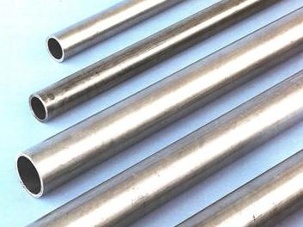Nickel Alloys: Breaking Down the Elements
Nickel alloys are composed of nickel and copper, as well as smaller amounts of iron, manganese, carbon and silicon. The combined properties of these elements make nickel alloy both easier to machine and stronger than the elements would be on their own.

- Nickel—or at least commercially pure nickel—is a metal with a high electrical conductivity, exceptional magnetostrictive properties, and a high Curie temperature. Its excellent thermal conductivity makes it ideal for use as heat exchangers in corrosive environments. Its corrosion resistance, especially with caustic alkalis, makes it useful for maintaining product quality in various chemical reactions, and essential in food processing and synthetic fiber manufacturing.
- Aluminum (also known as aluminium) is a metal that is both soft and light, and is used to produce a large number of metal products in the aerospace industry, as well as packaging, such as aluminum cans. Telescope mirrors are also coated with a thin layer of aluminum. Ideal in metal production due to its light weight and durability, aluminum easily forms alloys with various other elements in nickel alloys. The use of aluminum in a nickel alloy will decrease the weight and make an alloy easier to machine.
- Copper is a common element found in the environment, and is a reddish metal that is easy to polish to a shine. Copper is often used for electrical equipment due to its conductive properties for both heat and electricity. Besides its conductive properties, copper is anti-magnetic and is resistant to corrosion. It will form a greenish film, known as patina, which protects it from further corrosion, is easy to alloy and provides an anti-bacterial element. Used in alloys, it will increase the electrical and heat conduction of the material and help to make it resistant to corrosion.
- Carbon provides a number of applications, from decorative (such as diamonds) to printer ink and pencil tips. Carbon provides greater strength and increases hardness in a material. The drawback of carbon is that it makes material much harder to machine, so must be present in an amount that allows material to be worked as needed, yet still be strengthened.
- Manganese is pink-grey in color and is also essential to iron and steel production. It is used in stainless steel formulas and aluminum alloys that are in wide use. This element, however, like carbon, is strong but brittle, so it cannot be used by itself in alloys. Manganese used in a nickel alloy will add strength to the alloy.
- Silicon is used in nickel alloys to provide resistance to the electrical conductivity of copper and other metals. It is the most common element found naturally in the earth’s crust, and is very brittle with a metallic appearance.
All of the above elements can be included in various nickel alloys to change the properties of the alloy itself. Conductivity, strength, weight and resistance to the environment are all affected. The combination of all elements is determined by the intended use of the alloy being produced and, combined, increase the ability of the alloy to be used for various purposes.

